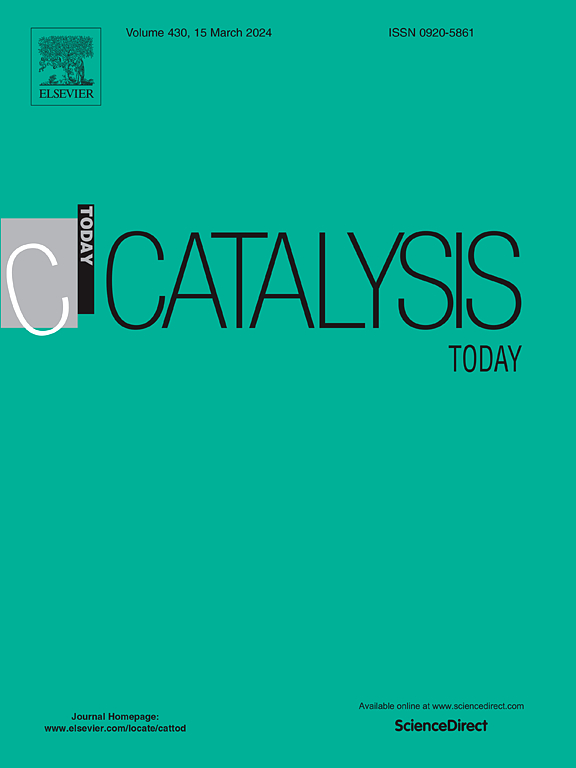Specific selectivity of simple oxides towards CH4 activation
IF 5.2
2区 化学
Q1 CHEMISTRY, APPLIED
引用次数: 0
Abstract
Simple metal oxides exhibit noticeable catalytic activity in methane conversion reactions. However, their catalytic role in the selective activation of CH4 to more valuable products (CO, H2, olefins) is often masked by the highly oxidative reaction conditions and by complex catalyst formulations. Transient studies of the direct interaction of CH4 with simple catalytic systems, including rare-earth (La2O3, Nd2O3, Y2O3), alkali-earth (MgO) and reducible (TiO2), reveal peculiar selectivity for different monometallic oxides. Rare-earth metal oxides show high initial activity towards partial oxidation products (CO, H2), while MgO possesses unique selectivity towards coupling products (C2H6 and C2H4) with remarkable activity in dehydrogenation reactions. A continuous supply of lattice oxygen species for the selective oxidation of CH4 to CO is provided by TiO2, which can effectively prevent accumulation of C deposits. The results indicate the roles played by the metal oxide materials and provide a basis for rational design of catalysts and reaction conditions for the selective conversion of CH4.
简单氧化物对CH4活化的选择性
简单的金属氧化物在甲烷转化反应中表现出明显的催化活性。然而,它们在选择性活化CH4生成更有价值的产物(CO, H2,烯烃)中的催化作用往往被高氧化反应条件和复杂的催化剂配方所掩盖。对CH4与稀土(La2O3、Nd2O3、Y2O3)、碱土(MgO)和还原物(TiO2)等简单催化体系直接相互作用的瞬态研究表明,CH4对不同的单金属氧化物具有特殊的选择性。稀土金属氧化物对部分氧化产物(CO, H2)具有较高的初始活性,而MgO对偶联产物(C2H6和C2H4)具有独特的选择性,在脱氢反应中具有显著的活性。TiO2为CH4选择性氧化生成CO提供了连续的晶格氧,可以有效地防止C沉积的积累。结果表明了金属氧化物材料的作用,为CH4选择性转化催化剂和反应条件的合理设计提供了依据。
本文章由计算机程序翻译,如有差异,请以英文原文为准。
求助全文
约1分钟内获得全文
求助全文
来源期刊

Catalysis Today
化学-工程:化工
CiteScore
11.50
自引率
3.80%
发文量
573
审稿时长
2.9 months
期刊介绍:
Catalysis Today focuses on the rapid publication of original invited papers devoted to currently important topics in catalysis and related subjects. The journal only publishes special issues (Proposing a Catalysis Today Special Issue), each of which is supervised by Guest Editors who recruit individual papers and oversee the peer review process. Catalysis Today offers researchers in the field of catalysis in-depth overviews of topical issues.
Both fundamental and applied aspects of catalysis are covered. Subjects such as catalysis of immobilized organometallic and biocatalytic systems are welcome. Subjects related to catalysis such as experimental techniques, adsorption, process technology, synthesis, in situ characterization, computational, theoretical modeling, imaging and others are included if there is a clear relationship to catalysis.
 求助内容:
求助内容: 应助结果提醒方式:
应助结果提醒方式:


